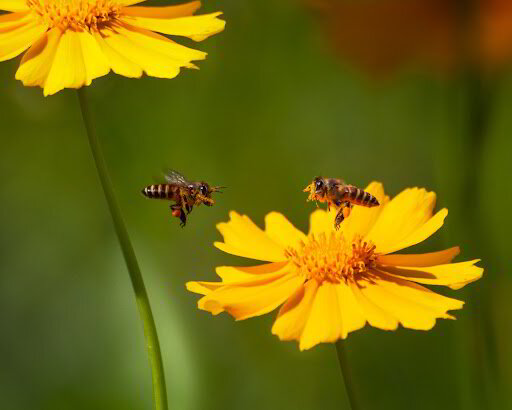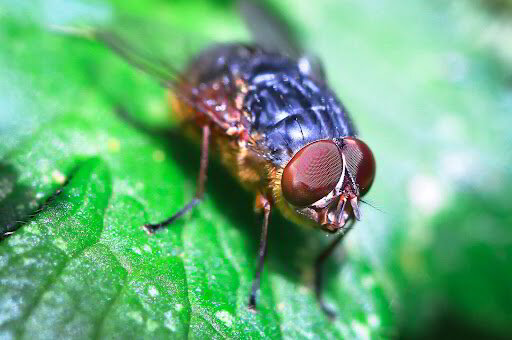- Insect Species
- Diversity
- Communication
- Mechanism
- Support Ecosystem
- Small Insects Can Cause Big Trouble!
What are some things that come to mind when you think about insects? Bugs, pests, annoying- probably not cool or exciting. Insects are typically associated with annoyance because of the way they affect humans and their homes.
However, many different insect species can be classified as fantastic or even unique! Insects have been around for a long time- so it’s no surprise if you find them fascinating.
Here are five interesting facts about bugs!
Insect Species
Insects have been on the planet for over 350 million years. That means they were here before trees and flowers even existed on Earth! Insects are older than dinosaurs by about 100 million years. And they are the largest species on the Earth.
Beetles make up the majority of all insects at 35%. That makes them the biggest group in existence, followed by ants (16%), flies (13%), and bees/wasps (12%).
Bees produce a sweet treat called honey which they generously share with other animals to ensure future pollination for flowers. Insects have compound eyes that give them excellent vision even though they don’t look like it.
Must Read: Why to Choose Green Pest Control Service?
Diversity
Insects are the most species-rich animal group. There are more than one million different insects that exist throughout the world. Insects make up 80% of all life on Earth! Insects are vital to the Earth because they control the populations of other insects and plants. Insects can be beneficial but also harmful- depending on their species. Insects have six legs that help them move around quickly!
All insects go through metamorphosis; when an insect grows up, it sheds its skin to form a new body structure before reaching adulthood. Insect wings work like airplane propellers: each branch has veins running throughout with small holes along the vein, which allow airflow so bugs can fly!
Communication
Insect antennae communicate with each other through vibration signals or “dancing” along an object’s surface. That helps them navigate their surroundings effectively while looking for food sources or mates, among other things.
Insect two antennae can also sense chemicals in the air or water they come into contact with. Many insects use this ability to identify good and bad environments for a living!
Butterflies communicate through chemicals known as pheromones, while moths can detect these same chemical signals using feathery antennae on top of their heads. Insect blood systems are very different from human blood.
Insect blood is called hemolymph, and it’s not red because the oxygen-carrying pigment doesn’t exist in insects as it does in higher animals like humans. Insects don’t have lungs either. Instead, they breathe through tiny openings on their bodies known as spiracles, leading to air sacs inside their body cavities.

Mechanism
Insect wings work like airplane propellers: each branch has veins running throughout with small holes along the vein, which allow airflow so bugs can fly! Insects have six legs that help them move around quickly. Insect species make up the majority of all known life on Earth- at 35%. Insects produce a sweet treat called honey which they share with other animals to ensure future pollination.
Insect blood is not red because the oxygen-carrying pigment doesn’t exist in insects as it does in higher animals like humans. Insects don’t have lungs; instead, they breathe through tiny openings on their bodies known as spiracles, leading to air sacs inside their body cavities.
Support Ecosystem
Insects are essential for maintaining ecosystems and other living things such as plants, fish, birds, and animals. They contribute to the improvement of the world! Insects are a part of the food web.
Insect eaters like birds, fish, and small mammals depend on insects for their survival. Insects provide nourishment to other animals through decomposition, pollination, or feeding them directly as prey.
Insects help reduce pollution by providing clean water through nutrient recycling (eating dead plants that otherwise contaminate rivers). – Insects provide an essential source of protein in many diets around the world!
The bee population has decreased since bees play an essential role in plant life cycles because they aid with pollination and reproduction processes. That reduces biodiversity, which is terrible for overall ecosystem health! If you want to preserve the environment, then look after these magnificent things!
Insects like caterpillars, cockroaches, crickets, and dragonflies can be found just about everywhere in the world except Antarctica. That includes land and water locations and some pretty extreme places like rainforests, deserts, mountains, and polar ice caps. It is believed that there are millions of insect species to discover yet today!
Small Insects Can Cause Big Trouble!
Insects may look small and harmless to the naked eye, but they can cause significant problems when they get into your house. The variety of bugs that enter homes is staggering- everything from spider mites to mosquitoes could be living in your home without you even realizing it!
If insects are crawling around your walls or flying through your windows, contact HERO PEST CONTROL for help with bug control services today.

